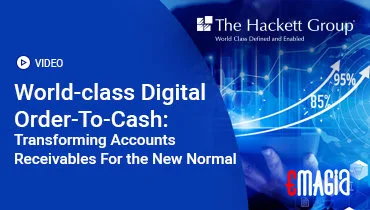Cash application is a critical component of the accounts receivable (AR) process, ensuring that incoming payments are accurately matched to outstanding invoices. However, businesses often encounter several challenges that can hinder this process, leading to inefficiencies and cash flow issues. This comprehensive guide delves into the five most common cash application problems, their implications, and strategies to overcome them.
Decoupled Remittances
Understanding Decoupled Remittances
Decoupled remittances occur when payment information is sent separately from the actual payment. This separation complicates the cash application process, as AR teams must manually match payments to the corresponding invoices without clear references.
Implications
- Increased Manual Effort: AR teams spend significant time searching through emails, bank statements, and other records to find matching information.
- Delayed Cash Posting: The time taken to reconcile payments delays the posting process, affecting cash flow.
- Higher Error Rates: Manual matching increases the likelihood of errors, leading to misapplied payments.
Solutions
- Automated Matching Systems: Implementing systems that use artificial intelligence (AI) and machine learning can automatically match payments to invoices, even when remittance information is separate.
- Customer Portals: Encouraging customers to use self-service portals ensures that payments and remittance information are submitted together, streamlining the process.
Payments Without Customer Data
The Challenge
Sometimes, payments are received without any identifiable customer information, making it difficult to determine which invoice the payment corresponds to.
Implications
- Delayed Reconciliation: Without customer data, AR teams must investigate to identify the payer, delaying the reconciliation process.
- Potential Misapplication: There’s a risk of applying payments to the wrong accounts, leading to discrepancies.
Solutions
- AI-Powered Identification: Utilizing AI tools can help predict the likely source of a payment based on patterns and historical data.
- Enhanced Payment Instructions: Providing clear instructions to customers on including necessary information with their payments can reduce instances of unidentified payments.
Multiple Remittance File Types
The Complexity
Customers may send remittance information in various formats, such as PDFs, emails, or electronic data interchange (EDI) files. This diversity complicates the extraction and processing of remittance data.
Implications
- Increased Processing Time: Different formats require different handling procedures, slowing down the cash application process.
- Higher Error Potential: Manual extraction from various formats increases the risk of errors.
Solutions
- Optical Character Recognition (OCR): Implementing OCR technology can automate the extraction of data from various file types, improving efficiency and accuracy.
- Standardized Submission Formats: Encouraging customers to use standardized formats for remittance information can simplify processing.
Missing Remittance Data
The Issue
At times, customers may send payments without any accompanying remittance information, leaving AR teams without guidance on how to apply the payment.
Implications
- Manual Follow-Up: AR teams must contact customers to obtain the missing information, consuming time and resources.
- Delayed Cash Application: Without remittance data, payments cannot be promptly applied, affecting cash flow.
Solutions
- Automated Communication: Setting up automated systems to request missing remittance information can expedite the process.
- Customer Education: Educating customers on the importance of including remittance information can reduce occurrences of missing data.
Short and Split Payments
Understanding the Problem
Customers may make payments that are less than the invoice amount (short payments) or a single payment covering multiple invoices (split payments), complicating the cash application process.
Implications
- Complex Reconciliation: Determining how to apply such payments requires additional analysis and can delay processing.
- Potential Disputes: Short payments may indicate disputes or issues that need resolution.
Solutions
- Advanced Matching Algorithms: Utilizing systems capable of handling partial and multiple invoice payments can streamline the application process.
- Dispute Management Processes: Establishing clear procedures for handling short payments and disputes can improve resolution times.
Enhancing Cash Application with Automation
Manual cash application processes are time-consuming and prone to errors. Implementing automation can address many of the challenges discussed:
- Efficiency: Automated systems can process payments faster, reducing the time between payment receipt and application.
- Accuracy: Automation reduces human error, ensuring payments are applied correctly.
- Scalability: As transaction volumes grow, automated systems can handle increased workloads without additional resources.
How Emagia Transforms Cash Application
Emagia offers a comprehensive solution to the challenges of cash application:
- AI-Driven Matching: Emagia’s platform uses AI to accurately match payments to invoices, even when remittance information is missing or in various formats.
- Integrated Customer Portals: Customers can submit payments and remittance information through Emagia’s portal, ensuring data consistency and completeness.
- Real-Time Processing: Emagia processes payments in real-time, accelerating cash application and improving cash flow.
- Comprehensive Reporting: The platform provides detailed reports and analytics, offering insights into cash application performance and areas for improvement.
Frequently Asked Questions
What is cash application in accounts receivable?
Cash application is the process of matching incoming payments to the corresponding customer invoices in the accounts receivable ledger.
Why is cash application important?
Efficient cash application ensures accurate financial records, improves cash flow, and reduces the risk of errors and disputes.
How can automation improve cash application?
Automation streamlines the cash application process by reducing manual tasks, increasing accuracy, and enabling faster processing of payments.
What are common challenges in cash application?
Common challenges include decoupled remittances, payments without customer data, multiple remittance file types, missing remittance data, and short or split payments.
How does Emagia help with cash application?
Emagia provides an AI-powered platform that automates the cash application process, improving accuracy, efficiency, and overall financial performance.
By addressing these common cash application problems and leveraging automation solutions like Emagia, businesses can enhance their accounts receivable processes, improve cash flow, and reduce operational inefficiencies.



